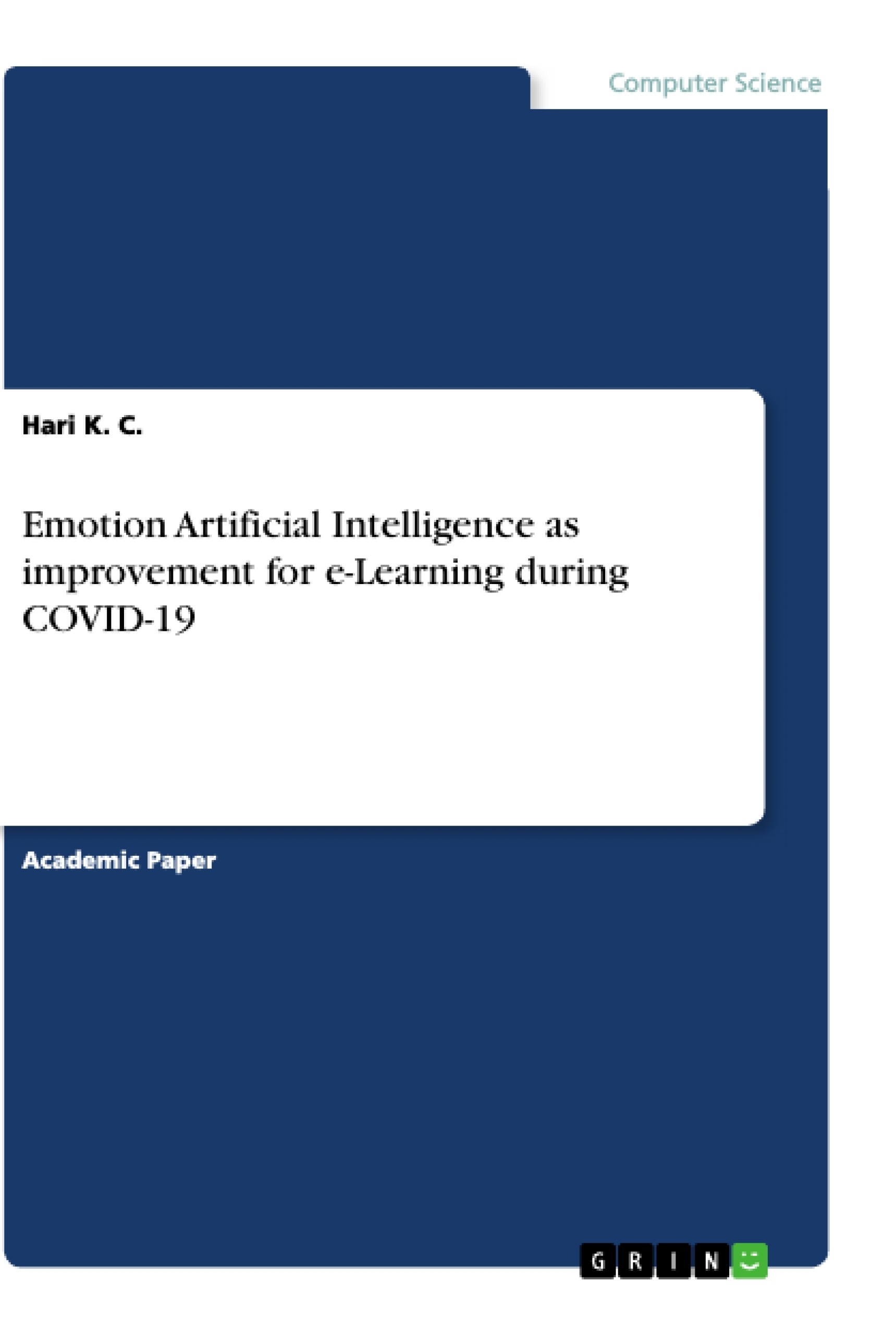In this paper student’s emotions such as excitement, happiness, confusion, sadness, desire and surprise, will be analysed by an Emotion AI. Therefore the neural network model, designed to capture the facial expression, is used. Deep learning is the emerging techniques to process large datasets of images with Kera’s using TensorFlow backend. Convolution Neural Network is an artificial neural network that has specialization in detection and classification. Convolution neural network has hidden layers called convolution layers. This layer consists of neurons. Facial emotion recognition usually employs a training and testing stage to produce the desirable output. The emotion of the students plays the vital role to determine the student interest in attending classes. Facial expressions are among the most universal forms of body language. The facial expressions are almost similar throughout the world. The facial expression, movement of head, eye, mouth helps to identify the emotions of the students so that the level of interest of student can be predicted form the emotion analysis of students. For example: A smile can be used to indicate happiness. Facial expression reveals the true feelings about a situation. Then, after collecting those information, e-learning quality can be improved and enhanced. The reaction of the students is analyzed during the teaching and learning course. Thus, the mood of students can be predicted easily which help to improve the e - learning environment. The feedback will be provided to teachers to enhance the teaching and learning process in e-learning.
Inhaltsverzeichnis (Table of Contents)
- INTRODUCTION
- OBJECTIVES
- RELATED WORK
- METHODOLOGY
- A) System Architecture
- B) Algorithm
- C) Image Preprocessing
- D) Feature Engineering
- E) Concentration level measurement
- F) Design of Convolution Neural network
- DATA COLLECTION
- RESULT AND ANALYSIS
- A) Face detection sample output
- B) Facial key points identification
- C) Concentration level
- D) Emotion Classification
- E) Analysis
- CONCLUSION
- REFERENCES
Zielsetzung und Themenschwerpunkte (Objectives and Key Themes)
This research explores the potential of Emotion Artificial Intelligence (AI) to enhance e-learning during the COVID-19 pandemic. The main objective is to improve the quality of virtual learning by detecting and monitoring student emotions and providing real-time feedback to teachers. The paper focuses on identifying and analyzing various student emotions like excitement, happiness, confusion, sadness, desire, and surprise, along with facial expressions. By combining facial expression analysis, concentration level measurement, and artificial neural networks, the research aims to determine learner engagement and interest in online classes. The findings will be used to provide teachers with feedback to improve the learning environment.
- Emotion recognition in e-learning
- Improving online learning experience through AI
- Utilizing facial expressions and concentration levels to gauge student engagement
- Developing a feedback system for teachers based on student emotional data
- The role of AI in addressing challenges of virtual education during pandemics
Zusammenfassung der Kapitel (Chapter Summaries)
- INTRODUCTION: This chapter provides an overview of Emotion Artificial Intelligence and its potential applications in e-learning. It highlights the challenges of virtual learning during the COVID-19 pandemic and how emotion AI can be leveraged to improve student engagement.
- OBJECTIVES: This chapter outlines the specific objectives and goals of the research, focusing on the development of a system for detecting and monitoring student emotions in e-learning environments.
- RELATED WORK: This chapter explores existing research on Emotion AI and its use in education. It reviews previous studies and relevant findings related to the topic.
- METHODOLOGY: This chapter details the methodology employed in the research. It describes the system architecture, algorithms, image preprocessing techniques, feature engineering, and the design of the convolutional neural network used for emotion classification.
- DATA COLLECTION: This chapter explains the data collection process, outlining the methods used to gather data related to student emotions and facial expressions during e-learning sessions.
- RESULT AND ANALYSIS: This chapter presents the results obtained from the analysis of the collected data. It includes an examination of the face detection output, facial key points identification, concentration level measurement, and emotion classification results. It also analyzes the findings and discusses their implications for the study.
Schlüsselwörter (Keywords)
This paper focuses on the application of Emotion Artificial Intelligence (AI) in the context of e-learning, specifically addressing challenges arising from the COVID-19 pandemic. Key topics include emotion recognition, facial expression analysis, concentration level measurement, and the development of a feedback system for teachers based on student emotional data. The research utilizes artificial neural networks and machine learning techniques for data processing and analysis. Other important keywords include e-learning, virtual learning, COVID-19, and university education.
- Arbeit zitieren
- Hari K. C. (Autor:in), 2020, Emotion Artificial Intelligence as improvement for e-Learning during COVID-19, München, GRIN Verlag, https://www.hausarbeiten.de/document/933196


